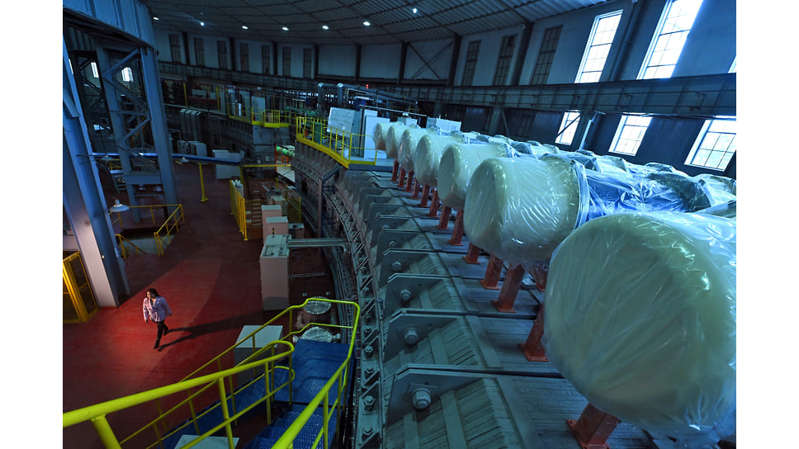
Is there an opportunity to go beyond the Standard Model
One of the most intriguing questions in modern physics is why there is more matter than antimatter in the universe. The answer may lie in understanding the nature of neutrinos: in one of the main theoretical models, this particle is identical to its antiparticle. If so, then a rare nuclear process called double neutrinoless beta decay (0) becomes possible.
Until now, no one has been able to register it, but the GERDA (GERmanium Detector Array) experiment, which is going on with the decisive participation of the team of the Scientific and Experimental Department of Nuclear Spectroscopy and Radiochemistry of the Laboratory of Nuclear Problems of the Joint Institute for Nuclear Research (Dubna), has managed to reach the best limit for the half-life 0-decay versus all competing projects.
A neutrino is a particle that is extremely difficult to register, but the determination of its properties has made it possible to significantly advance in understanding the physics of elementary particles. Four Nobel Prizes have been awarded in recent years for research in the field of neutrino physics. Despite this, the question of the nature of the neutrino (whether the neutrino is a Majorana particle (the particle is identical to its antiparticle) or Dirac) is still open.
Double two-neutrino beta decay is a legal process in which two neutrons in a nucleus decay simultaneously into two protons, two electrons, and two antineutrinos. This rare process has already been observed on several nuclei, including 76Ge. In the hypothetical 0-decay, neutrinos are absent, which means that the lepton number is not conserved. Therefore, this process is completely prohibited in the standard model (SM) of the electroweak interaction. Thus, the registration of 0-decay will be an unambiguous proof of the existence of “new physics” outside the SM.
Currently, there are many projects aimed at finding this amazing decay, using various isotopes and detection techniques. The GERDA experiment is one of the most important in this area of physics. It is being carried out at the Gran Sasso National Laboratory in Italy by European and Russian scientists.
GERDA uses detectors made of highly pure germanium enriched in the 76Ge isotope. Since germanium is both a source and a detector of the desired events, the detection efficiency is close to maximum. In addition, the experimental setup is compact and requires a minimum amount of construction materials, which is essential for achieving a low background level. The high energy resolution inherent in germanium detectors and innovative experimental techniques developed by the GERDA collaboration provide record suppression of natural radioactive background.
The GERDA experiment features a fundamentally new approach to the use of germanium detectors – here open detectors are directly immersed in liquid argon, which not only cools them down to their operating temperature (87 Kelvin), but also serves as additional protection from background radiation. The detectors with a total mass of about 40 kg are mounted in seven strings inside a cryostat with liquid argon (64 cubic meters), located in a water reservoir with a volume of 590 cubic meters, which, in turn, is located in the Gran Sasso underground laboratory, which protects the installation from cosmic radiation.
In the second phase of the experiment, it was possible to significantly increase the detection sensitivity. According to the results of the analysis of all statistics accumulated in the project of 127.2 kg • years (of which 103.7 kg • years in the second phase), the signal from 0-decay was not detected. The world's best limit has been set for a half-life> 1.8 x 10 ^ 28 years (90% CL).
The linear dependence of sensitivity on exposure, demonstrated in GERDA, once again proves that the data acquisition was performed in zero-background mode. This unique achievement allows us to count on the successful implementation of the large-scale zero-background germanium project LEGEND. The first phase of the new experiment will be based on the modified GERDA infrastructure in Gran Sasso and operate with 200 kg of 76Ge detectors. Sensitivity of 10 ^ 27 years is planned to be achieved after five years of data collection, and LEGEND is expected to start at the end of this year.
Konstantin Gusev, head of the GERDA project at JINR, senior researcher
Read also:

